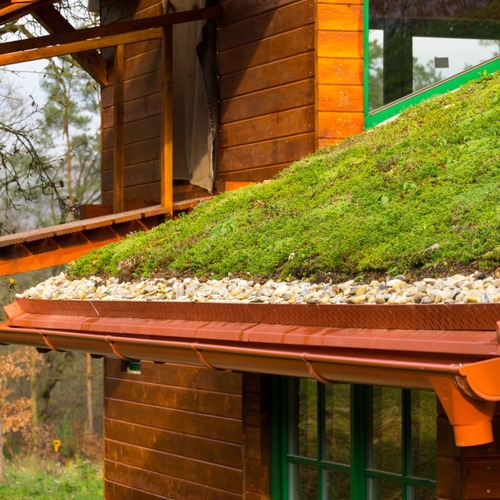
All across the country, including here in the Knoxville, Tennessee area, everyone is concerned with the environment and what can be done to help, like minimizing the island heat effect and the air quality. While common in European countries, green roofing has become more popular here in the United States because of the many benefits they have for the environment
What is green roofing and what are the benefits?
Green roofing is sometimes referred to as a living roof or a vegetated roof. They are installed on a ballasted roof with a waterproofing membrane. Once the membrane is in place, the soil and plants are then installed. Well-designed and well-engineered green roofing that is consistently maintained can provide several benefits such as:
- Environmental
- Social
- Economic
- Aesthetics
Results of research and studies provide us with more details on these benefits:
- Stormwater Management: There are massive amounts of concrete and paved surfaces in suburban and urban areas which can cause problems, like not allowing stormwater to be absorbed into the earth’s natural surface. This results in excessive amounts of runoff water causing damage and sweeping pollutants into the water bodies. Green roofing reduces that stormwater flow by over 60% and delays the flow rate by 3 hours.
- Energy: Green roofing reduces the energy needed to cool structures by providing shade, insulation, and thermal mass.
- Biodiversity and Habitats: Green roofing provides new urban habitat for birds, insects, and plants which increases biodiversity.
- Urban Heat Island: If you’ve gone from the city to the country, you’ve noticed the air is typically warmer. This is because these asphalt and concrete surfaces absorb solar radiation. That leads to more energy consumed to cool homes and businesses. Green roofing helps reduce this Urban Heat Island effect.
- Lifespan of Roofs: Green roofing has a lifespan that is two times longer than conventional and traditional roofing.
- Aesthetically: Green roofing adds beauty to a flat roof structure, which adds value to the structure too.
What does green roofing installation cost?
| This can depend on which type of green roofing you choose to have installed. The general price range of the 4 different types, based on 1,000 square feet and includes the materials are: | |
| Semi-intensive Green Roofing: Between $15,000 and $35,000 | |
| Extensive Green Roofing: Between $10,000 and $25,000 | |
| Blue-Green Roofing: Between $13,000 and $35,000 | |
| Bi-solar Green Roofing: Between $25,000 and $40,000 |
What are the differences in these 4 types of green roofing?
Any of these four green roofing options is a help to the environment in its way. The differences in these roofing options are:
- Semi-intensive green roofing is typically six to ten inches deep and is lighter and shallower than an intensive roof. It has a higher level of maintenance than extensive green roofing, but less than intensive green roofing. It can support a wider selection and more plant life than extensive green roofing.
- Extensive green roofing is more affordable with a soil layer between four inches and seven inches. Ideal for a flat or low-sloping roof with shallow root vegetation. Minimal maintenance is required with extensive green roofing.
- Blue Green roofing incorporates stormwater collection and management (the blue part) and a garden (the green part), giving the structure energy and water efficiency.
- Bi-solar Green Roofing is a combination of vegetation and solar panels. This eases the Urban Heat Island effect and helps the building create clean electricity.
Are there any drawbacks to green roofing?
Green roofing has several advantages, and they are important to our climate and environment. But yes, there are drawbacks to green roofing too:
1. A higher cost
Green roofing is, unfortunately, more expensive to install than the standard roofing options. Contributing to that higher cost is the extra support that is needed to handle the increased load. While this may give you sticker shock initially, the ROI will come over time in lower utility bills.
2. Increased weight load
As mentioned above, the higher cost is attributed to the additional support because of the additional weight of green roofing. Green roofing can increase the weight up to 110 pounds per square foot. A structural engineer inspection should be done before having green roofing installed to ensure the structure can handle the weight even with extra support.
3. Extra maintenance
Green roofing will require some work to ensure it is thriving and doing the job you have in mind. Green roofing will require a routine of feeding, watering, and weeding. For a commercial structure, dividing these tasks between the occupants can make light the work!
At The Root of The Matter: Is Green Roofing Worthwhile?
Just as with your own home, the benefits of green roofing on a commercial structure are quite significant. They not only help minimize the urban island heat issue, but green roofing can help lower energy use, which will lower your energy bills. It also helps extend the lifespan of the existing roof surface, which is money saved by eliminating having to replace the roofing.